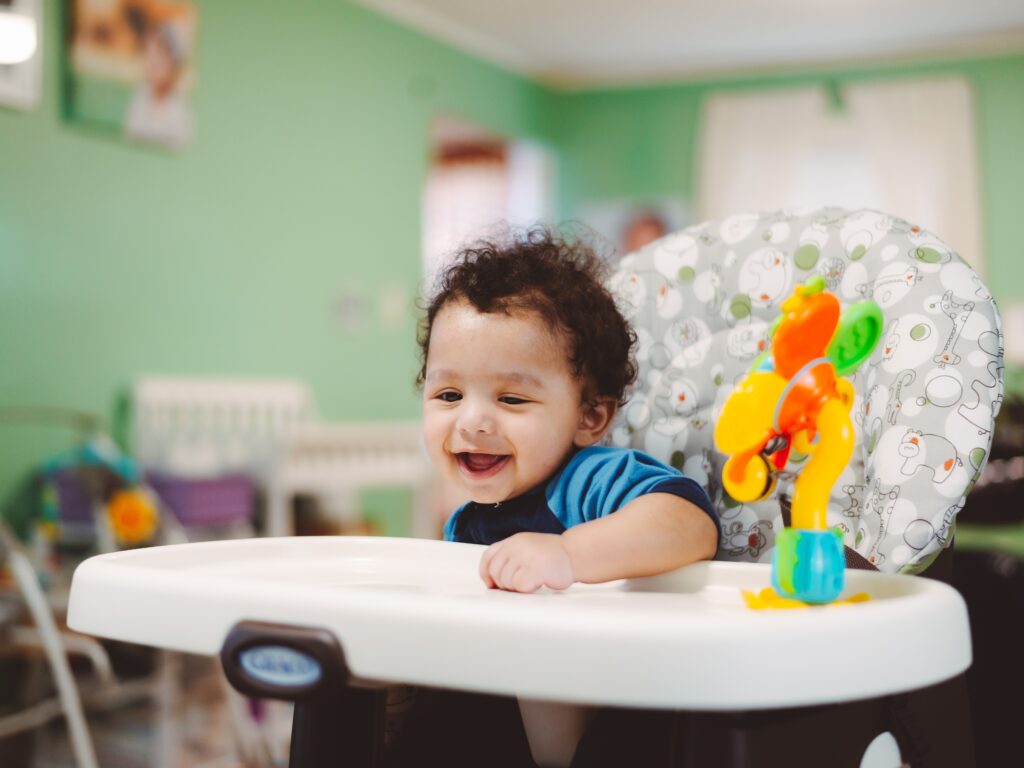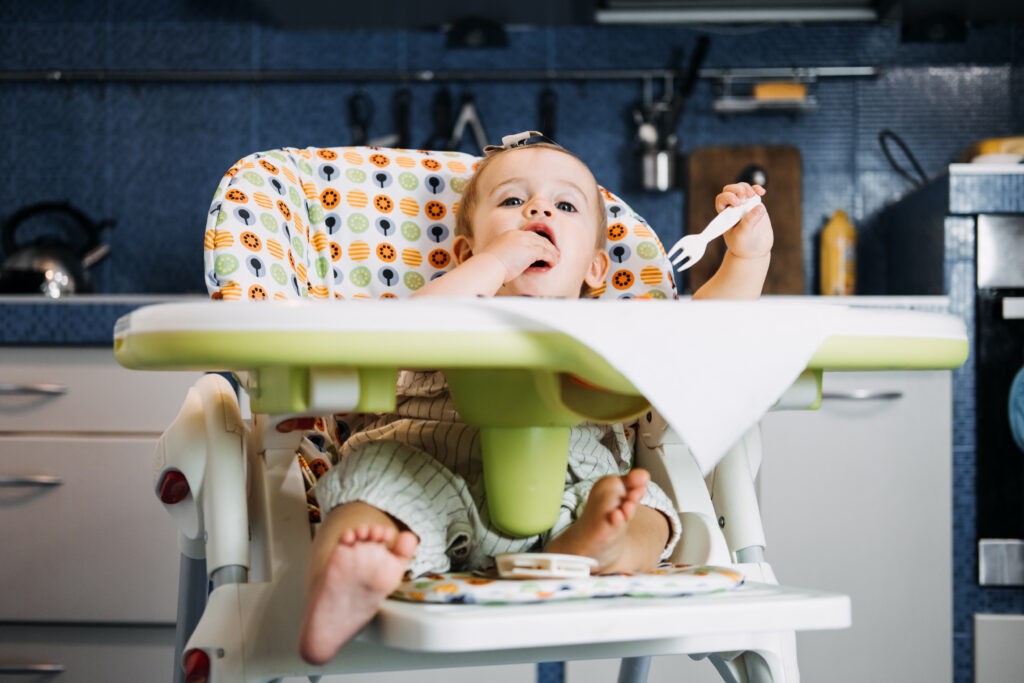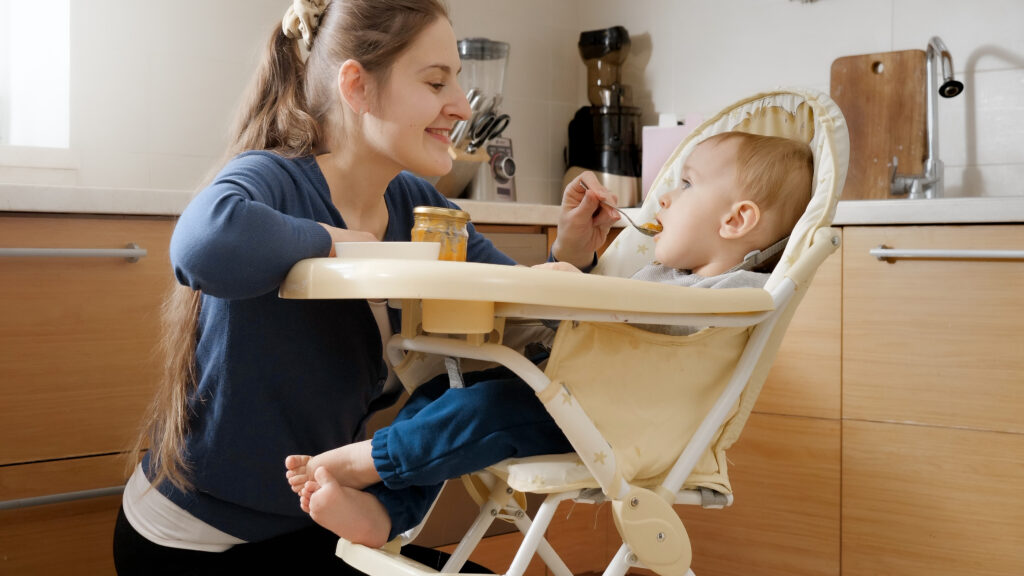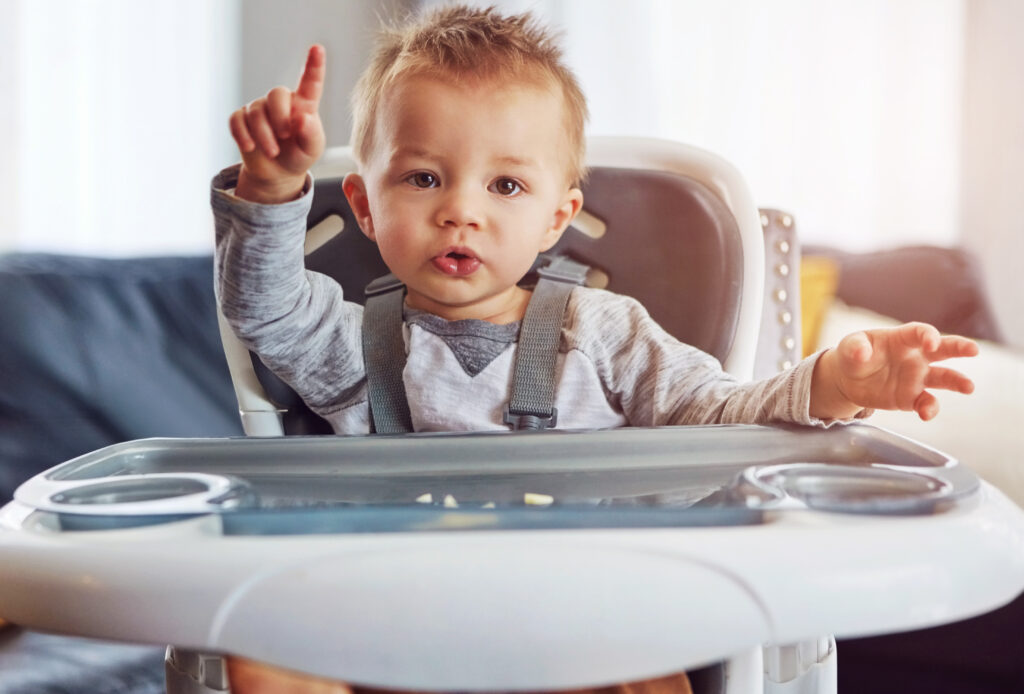Baby-friendly homes are usually equipped with high chairs, which are seen as a developmental milestone for young children. High chairs offer several advantages beyond merely providing a dedicated area for feeding, despite the fact that some people may only consider them to be a convenience. High chairs are essential to a baby’s growth and development because they guarantee stability and safety, encourage proper posture, and foster family bonding. Comprehending the all-encompassing benefits of utilizing a high chair may assist parents in making knowledgeable choices that promote their child’s welfare.
Stability and safety
Safety is one of the main justifications for using a high chair. High chairs are made to give babies a safe and secure place to sit while they eat. In addition to ensuring that the infant is positioned safely and lowering the possibility of falls or accidents, the solid structure also includes safety features like harnesses and belts. Especially because babies can be very fidgety and energetic during meals, this steadiness is really important.
Five-point harness systems, which fasten the baby’s shoulders, waist, and in between their legs to keep them from slipping or climbing out, are frequently included with high chairs. Most high chairs have a wide base that adds stability and reduces the chance of it toppling over. In order to guarantee that the chair stays in place when needed, certain high chairs furthermore feature wheels with locking mechanisms. When combined, these safety measures give caregivers comfort in knowing that the baby is eating in a secure and supervised environment.
Encouraging Proper Posture
High chairs are made with an ergonomic design to help babies with their posture. Maintaining proper posture when sitting is beneficial for the growing muscles and spine of the child. A high chair allows the infant to sit upright, facilitating better digestion and lowering the chance of choking, as the food passes down the throat more readily when the baby is sitting properly.
Maintaining proper posture when feeding also helps to avoid problems like aspiration and acid reflux. The baby’s legs can be properly positioned in high chairs with adjustable footrests, which adds to the support and helps the infant keep an upright posture. The baby’s general comfort and wellbeing during meals can be greatly improved by making sure they sit with their feet supported and their back upright.

Promoting Family Dinnertime
A crucial family ritual that promotes communication and bonding is mealtime. Babies can eat at the dinner table with the rest of the family by using a high chair. Their social and emotional growth may benefit from this inclusion, which makes them feel like members of the family. Babies can also be introduced to the idea of regular meal times and healthy eating habits through watching and taking part in family meals.
Babies can learn a lot from watching and imitating older family members’ eating habits when they participate in family dinners. They observe the chewing and swallowing of food, the use of utensils, and the talk and interaction that occur during mealtimes. This exposure may have a good impact on their social and dietary habits. Furthermore, eating meals together as a family gives parents the chance to set an example of healthy eating practices and food selections, which can help the baby develop a lifelong love of healthy eating.
Feeding Simplicity
A baby’s feeding routine might be untidy. In order to facilitate cleanup, high chairs often have trays that may collect spills and crumbs. Because these trays are frequently washable and detachable, keeping cleanliness is made easy and effective. High chairs can lessen the strain on caregivers’ arms and back by enabling them to feed the infant at a comfortable height.
High chairs are often designed with features that can grow with the infant, such as reclining seats and trays that can be adjusted. To keep the infant occupied during mealtimes, some high chairs additionally have extra accessories like snack trays, cup holders, and toy attachments. Feeding sessions become more interesting and pleasurable for both the infant and the caregiver when the high chair is positioned at eye level and allows for eye contact.

Self-reliance and education
When babies begin to experiment with self-feeding, high chairs offer them a sense of independence. When a baby is sitting securely, caregivers can put food within reach so that the child can practice using cutlery, picking up food, and improving fine motor skills. Their development depends on this autonomy, which also motivates children to pick up new abilities at their own speed.
A baby’s ability to feed themselves is a significant developmental milestone. It promotes hand-eye coordination, sensory exploration, and the development of fine motor skills. High chairs offer a secure and confined space where infants can explore diverse textures, flavors, and feeding techniques. Their cognitive and sensory development depends on this exploration. Furthermore, letting babies feed themselves can help them feel more confident and accomplished, both of which are beneficial for their general development.
Adaptability and Durability
Many contemporary high chairs are scalable, meaning they may grow with the child. Many versions offer longer use and versatility by converting from a high chair to a toddler chair or booster seat. Because of its versatility, a high chair is a piece of furniture that a child can use for many years rather than merely an expensive purchase.
A child’s demands can be met by high chairs that include height and reclining settings that can be adjusted. After the child outgrows the high chair, certain high chairs can be transformed into booster seats that can be used at the dinner table, enabling the child to continue taking part in family meals. This adaptability guarantees that the child will be comfortable and included in family activities as they develop, in addition to offering value for the money.

Establishing a Joyful Dining Ambience
Having a dedicated high chair promotes a happy dining atmosphere. It can be helpful to establish a schedule as babies come to link the high chair with mealtime. Mealtime conflicts can be avoided and healthy eating habits can be developed with this constancy.
Establishing a designated area for meals contributes to the development of a disciplined eating schedule, which may provide solace to infants. They become more inclined to cooperate during mealtimes as they come to identify the high chair with the pleasurable feeling of eating. Additionally, this beneficial correlation may lessen fussy eating habits and tantrums during meals. A well-made high chair with eye-catching designs and entertaining features might help a baby enjoy mealtimes more and develop a favorable attitude about eating.
Encourages Weaning
Weaning, the process of moving from milk or formula to solid meals, is an important stage in a baby’s growth. High chairs are essential to this process because they offer a supervised and secure setting for experimenting with new foods. High chairs allow babies to try a variety of textures and flavors, which facilitates a more seamless and pleasurable weaning process.
The early phases of weaning might be especially benefitted from high chairs with movable reclining settings. As the infant learns to manage solid foods, these chairs can be adjusted to give them the best possible comfort. Furthermore, the high chair’s tray has the capacity to accommodate multiple tiny servings of food, enabling infants to experiment and determine their preferences. In order to cultivate a varied taste and lower the chance of acquiring fussy eating habits later in life, this inquiry is crucial.

Promotes the Development of Social Skills
Family dinners spent in a high chair involve more than just eating; it’s a social occasion. Observing and participating in mealtime exchanges, babies pick up social cues, politeness, and interactions. Their social and communication abilities are developed as a result of this early social context exposure.
Babies seated on high chairs are able to participate actively in conversations and family interactions since they are at the same level as other family members. Babies benefit from feeling appreciated and included, which can increase their confidence and sense of self. Babies gradually develop the ability to listen, take turns, and communicate, setting the groundwork for solid social skills that will serve them well in life.
Encourages Sensory Growth
Babies can experience mealtime as a sensory-rich event, and high chairs offer the ideal setting for them to do so. Food’s many textures, hues, and scents pique their interest and aid in the development of their senses as a whole. This sensory exploration can be further enhanced by the colorful and engaging trays that are frequently included with high chairs.
Babies learn about different textures through handling food, such as the crunchiness of vegetables and the smoothness of yogurt. The development of hand-eye coordination and fine motor abilities depends on these tactile interactions. Furthermore, the stimulation of their senses—both smell and sight—that various foods offer can improve their cognitive growth and sensory awareness. Mealtime can become a multisensory experience with high chairs that include toys or attachments that can stimulate the senses even more.

In conclusion, high chairs serve as much more than just a feeding aid. In addition to helping the development of social skills, independence, excellent posture, family contact, ease of weaning, and improved sensory experiences, they are essential for guaranteeing the security and well-being of infants. A high chair is an essential piece of furniture in every home with a little child since it may make a big difference in a baby’s general growth and well-being. A high chair can help parents foster a happy, healthy atmosphere that promotes their child’s development and learning by being an integral part of everyday routines.


